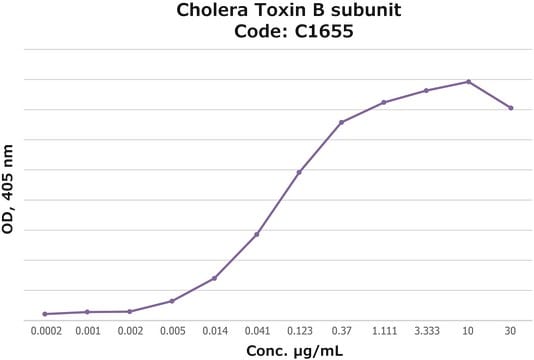C6499
CTB
≥98% (HPLC)
Synonym(s):
CTPB, N-(4-Chloro-3-trifluoromethyl-phenyl)-2-ethoxy-benzamide
Sign Into View Organizational & Contract Pricing
All Photos(1)
About This Item
Empirical Formula (Hill Notation):
C16H13ClF3NO2
CAS Number:
Molecular Weight:
343.73
MDL number:
UNSPSC Code:
12352200
NACRES:
NA.77
Recommended Products
Quality Level
Assay
≥98% (HPLC)
form
powder
color
white to off-white
solubility
DMSO: >10 mg/mL
storage temp.
2-8°C
SMILES string
FC(F)(F)c1c(ccc(c1)NC(=O)c2c(cccc2)OCC)Cl
InChI key
YDXZSNHARVUYNM-UHFFFAOYSA-N
Related Categories
General description
CTB (N-(4-Chloro-3-trifluoromethyl-phenyl)-2-ethoxy-benzamide) is derived from anacardic acid.
Application
CTB has been used to study its apoptotic effects on P53 protein acetylation.
Biochem/physiol Actions
CBP (CREB binding protein)/p300) histone acetyltransferases (HATs) activator; p300 HAT activator.
CTPB was a first known small molecular activator of histone acetyltransferase p300. CTB is a simplified analog of CTPB with comparable or higher activity. The compound activates the histone acetyltransferase (HAT) activity of p300/EP300/E1A binding protein.
Small molecule activators of HAT such as CTB (N-(4-Chloro-3-trifluoromethyl-phenyl)-2-ethoxy-benzamide) is useful for altering chromatin acetylation directly. It might serve as a therapeutic agent for treating the complications of cognitive dysfunction including neuropsychiatric, neurodevelopmental and neurodegenerative diseases.
Features and Benefits
This compound is a featured product for Gene Regulation research. Click here to discover more featured Gene Regulation products. Learn more about bioactive small molecules for other areas of research at sigma.com/discover-bsm.
Storage Class Code
11 - Combustible Solids
WGK
WGK 2
Choose from one of the most recent versions:
Certificates of Analysis (COA)
Lot/Batch Number
Don't see the Right Version?
If you require a particular version, you can look up a specific certificate by the Lot or Batch number.
Already Own This Product?
Find documentation for the products that you have recently purchased in the Document Library.
Willian S Korim et al.
Cardiovascular research, 115(6), 1092-1101 (2018-10-26)
Neuroinflammation is a common feature in renovascular, obesity-related, and angiotensin II mediated hypertension. There is evidence that increased release of the pro-inflammatory cytokine tumour necrosis factor-α (TNF-α) contributes to the development of the hypertension, but the underlying neural mechanisms are
Dan Zheng et al.
Vaccine, 34(51), 6464-6471 (2016-11-22)
The long alpha-helix (LAH) region located in influenza virus hemagglutinin (HA) shows conservation among different influenza A strains, which could be used as a candidate target of influenza vaccines. Moreover, the hepatitis B virus core protein (HBc) is a carrier
Cory Chew et al.
Neurorehabilitation and neural repair, 33(8), 656-667 (2019-07-10)
Background. Motoneuron loss is a severe medical problem that can result in loss of motor control and eventually death. We have previously demonstrated that partial motoneuron loss can result in dendritic atrophy and functional deficits in nearby surviving motoneurons, and
DeMetris D Reed et al.
Meat science, 123, 205-210 (2016-10-19)
Palatability attributes of beef striploin steaks mechanically enhanced with pork fat were evaluated. Striploins were collected from USDA Standard steer carcasses, longitudinally cut into halves (lateral or medial) and assigned randomly to pork fat injection (PFI) or non-injected control (CON).
The effect of CTB on P53 protein acetylation and consequence apoptosis on MCF-7 and MRC-5 cell lines
Dastjerdi MN, et al.
Advanced Biomedical Research, 2 (2013)
Our team of scientists has experience in all areas of research including Life Science, Material Science, Chemical Synthesis, Chromatography, Analytical and many others.
Contact Technical Service







